The Xth European Urban and Regional Planning Awards 2014

The 10th European and Regional Planning Awards
ECTP-CEU, with the support of the Committee of Regions, is proud to announce the Winners of the 10th European Urban and Regional Planning Awards 2013-2014.
>>> See all photos <<<
 |
Mr Petter Wiberg, Chair of the ECTP-CEU Awards Jury hands the enveloppe with the Winners to Mr Petr Osvald, 1st Vice-Chairman of the COTER commission.
|
Press release
The 10th European Urban and Regional Planning Awards were awarded by Mr Petr Osvald 1st Vice-Chairman of the COTER commission, Mr Petter Wiberg, Chair of the ECTP-CEU Awards Jury and Mr Henk van der Kamp, President of the European Council of Town Planners on 5th of May 2014 at the Committee of the Regions in Brussels.
This prestigious award recognizes innovative urban and spatial planning projects that demonstrate the role of urban renewal and territorial cohesion.
The winners of the 10th European planning awards are good examples of adaptation to climate change, especially with regard to how energy solutions have been made an integral part of spatial planning.
The jury decided to pick four very different winners. The winning projects have a number of characteristics which make them stand out:
• They demonstrate the importance of spatial planning in coordinating land use, urban and regional development with energy and climate issues in order to achieve optimal solutions across different sectors such as transport, housing and services, the location of business and industry, energy production, distribution and consumption.
• The projects illustrate how efficient interdisciplinary and inter professional efforts can achieve innovative, robust and convincing results in terms of reduced energy needs, more sustainable cities and human settlements.
• The key role of visionary government and governance at local, regional and national level is highlighted in all the projects. It is quite clear how it is not only cooperation between professions and skills which are necessary to be successful, but also cooperation between administrative sectors and between departments. Public authorities are also able to generate participation and to educate. Knowledge and involvement by the public at large are probably some of the most important keys to success for a future sustainable world.
• The winning projects contribute to the development of a philosophy of sustainability which integrates concepts of territory, planning and energy in a holistic manner which diverts attention away from the individual project, to the territorial unit.
The four winners were also picked because they demonstrate successful plans and projects at different spatial scales from the village or small town to a major sub urban brown field development, to the level of a major city and further on to the level of the region at a national and international context. They show that small size is not an inhibition to innovation. Nor is a problem too big to be handled.
The jury feels confident that the winners of the 10th round of the European planning awards are worthy of the recognition they are given. The projects have not been ranked in relation to each other as the opinion of the jury was that they represent different and independent examples of approaches and solutions in very different contexts. It is to be hoped that they will serve to encourage and inspire colleagues, investors and decision makers elsewhere on the path to a more sustainable future.
 |
| Mr Henk van der Kamp, ECTP-CEU President |
|
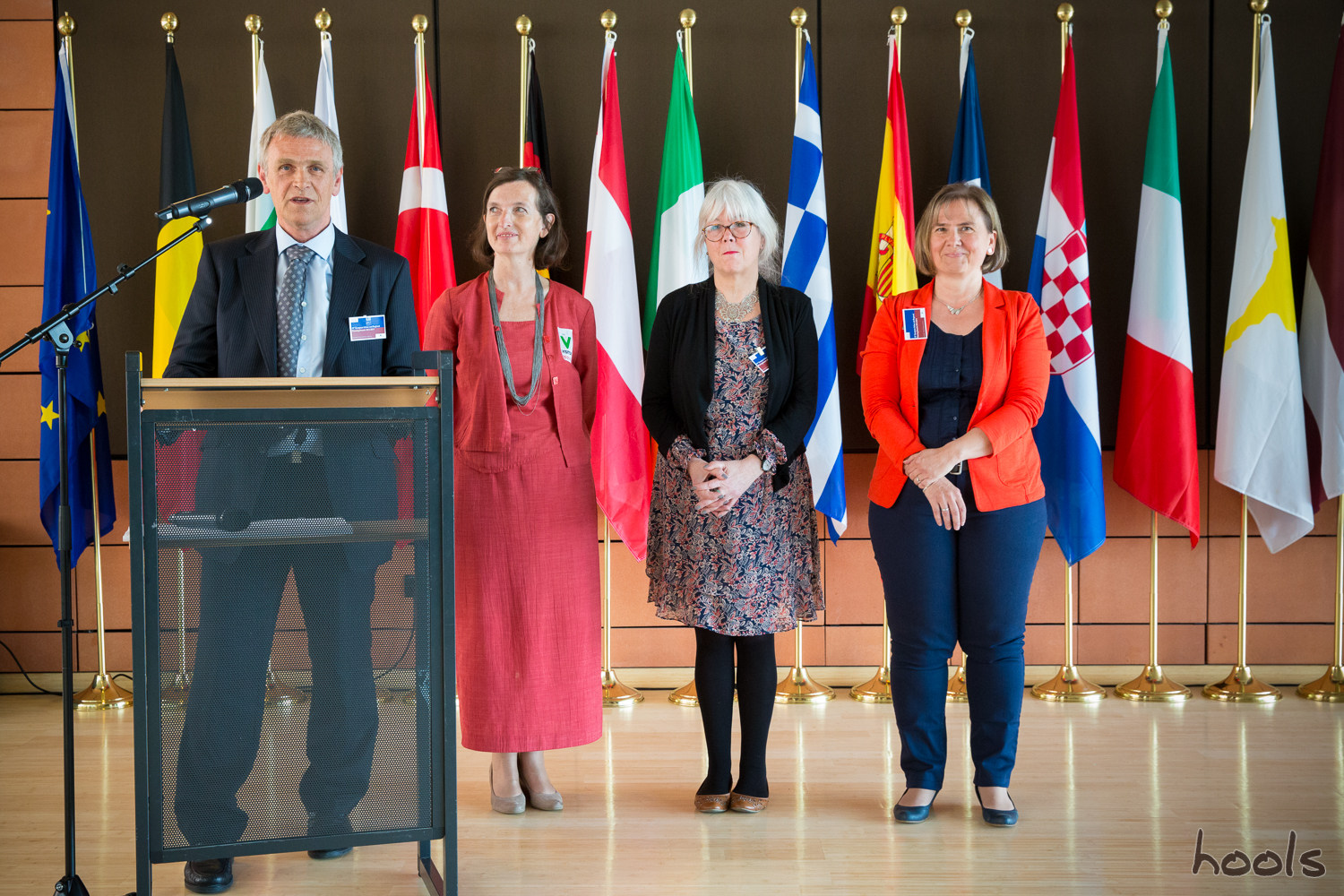
|
| Jury members Petter Wiberg, Dominique Lancrenon, Diane Smith & Christine Shwaberger |
The four Winners:
Switzerland: Embarking the Whole Territory on the Path of Sustainability
Department of Town and Country Planning, Housing and Energy, Republic and State of Geneva
Head of energy and urban planning office, Mr Olivier Epelly and Mrs Isabel Girault
Jury citation:
Recognising that climate change calls for a transition from reliance on fossil fuels to renewable energy the Canton of Geneva has adopted a philosophy which combines planning for energy production and consumption with spatial planning. A starting point is the definition of the territory in terms of resources and places of production, storage, distribution and consumption. The jury appreciated this approach as it provides a conceptual framework for the practical application of integrated land use, energy, and spatial planning techniques at a regional as well as local scale. The territory becomes a physical framework for the provision of an overall strategy for energy and land use within which individual projects consistent with the strategy can be developed.
The approach has recently been supported through a revision of Cantonal legislation. The changes bring town planning and energy planning together in such a way that energy issues are fully integrated into spatial planning projects. Since the end of 2013 housing, energy and town planning have been brought together within one department for housing, planning and energy. The example of Geneva, in the opinion of the jury, demonstrates how a clear philosophy supported by a strong direction of policy can enable innovative practices and mobilise a wide range of skills and resources on a large scale. It also recognises the importance of spatial planning as a vehicle for coordinated interdisciplinary planning and implementation.
The jury was impressed by the way in which the implementation of different projects in different parts of the Canton have been launched to enable the territory to become a testing ground for the energy transition from carbon to renewables. The projects are different in character as they draw on thermal heat from the Lake Geneva and the Rhone river; from solar power and excess industrial heat, and from geothermal sources. All projects involve a wide range of professional and commercial stakeholders further demonstrating the integration of planning and energy. The projects are partly associated with urban expansion and partly with existing built up areas and implementation therefore necessitates extensive public participation. In the opinion of the jury, the Geneva project demonstrates a wide range of experience of considerable interest for planners, scientists, urban managers and politicians interested to learn how spatial planning and future ways of energy provision may be handled as a whole, and how to manage such processes in a complex urban setting.
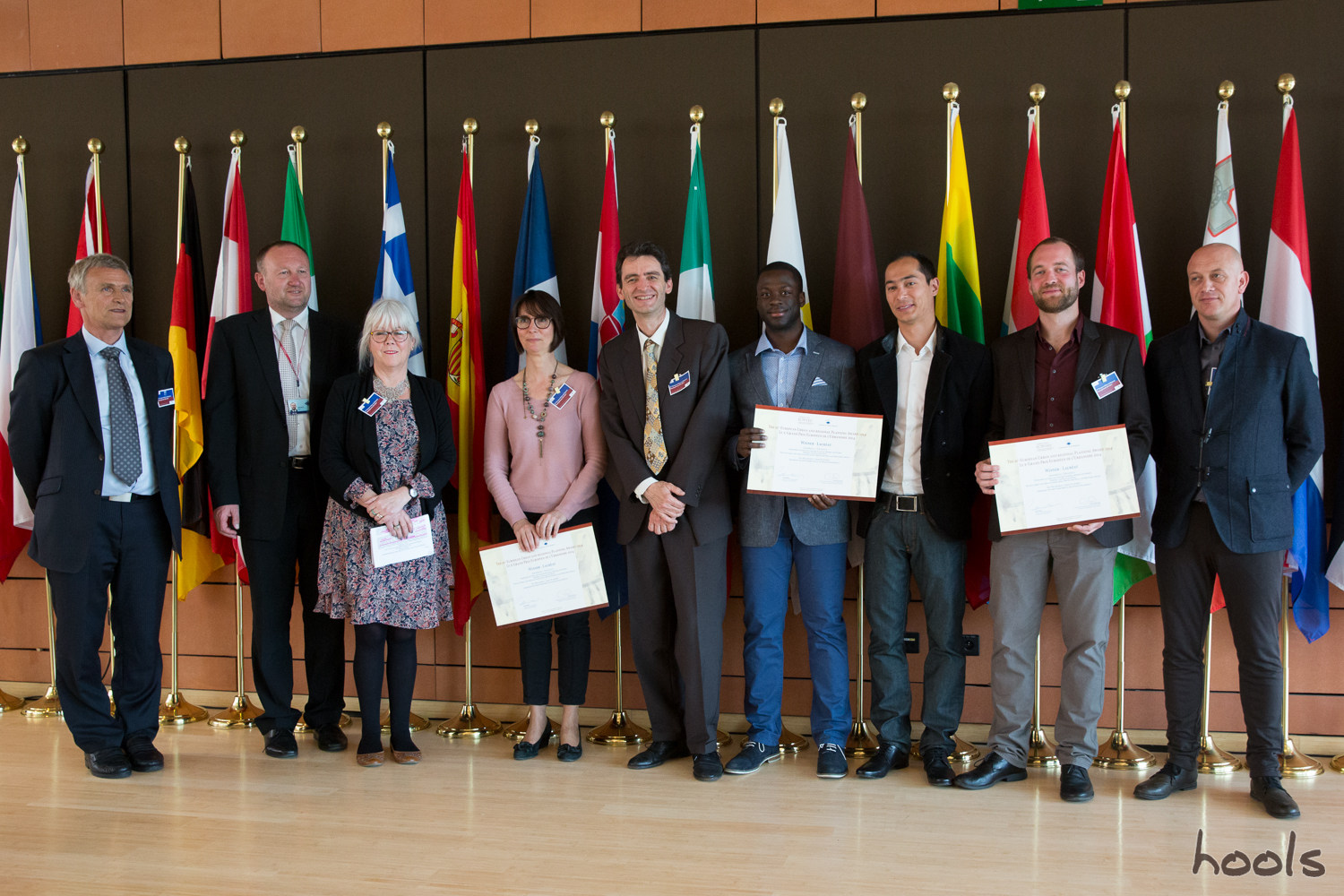
|
|
France: Montmélian and its future Triangle Sud solar area
La ville de Montmélian et les urbanistes James Su Pretelli et Sarah Cohen représentant les équipes
LIEUX-DITS, PROGRAMMES-URBAINS, TECSOL, MDP, INDDIGO, HIS&O and H. SAUDECERRE
Jury citation:
Montmélian, a small but growing town of 4000 inhabitants in the Combe de Savoie region, has committed itself to ensure very high environmental standards with regard to land use, transport and the production and use of energy from renewable sources.The town is a pioneer in this field. Its solar commitment began over 30 years ago and, to accommodate expansion, the town has recently adopted an ambitious plan for its Triangle Sud where the aim is to cover 80% of the thermal requirements by means of solar heating.
In its Land Use Plan, approved in 2012, the planning directives require that all new constructions must document energy efficiency at 20% above national standard requirements. It also states that 50% of its primary energy should be supplied from renewable energy sources, particularly from solar energy. The jury was impressed by these ambitious goals and the established track record suggests that further developments will have a fair chance of success. It was also noted that an associated criterion of success is that energy from alternative sources should be supplied at competitive prices.
The plans include a sophisticated approach concerning building construction and design; the establishment of a heat distribution network and storage facilities to ensure sufficient heat supplies during the winter season. To ensure optimal results, land use and urban densities have to be carefully planned and managed.
The town has involved its inhabitants directly. The objective of the municipal policy is to be at the heart of a collective awareness of environmental issues. By positioning itself as an experimental arena for new solar technologies, Montmélian wishes to demonstrate that a small town can be an example for others who wish to test out the generation and use of renewable energy. The jury finds the approach to participation and innovation to be particularly important as it should stimulate awareness and curiosity while, at the same time, it demonstrates that results which make a difference are within reach.
The jury also noted that the approach adopted by Montmélian reflects the experimental nature of many aspects of work with environmental issues. The study draws on a wide range of skills relating to transport, energy hydraulics and others. In particular, the project demonstrates convincingly how spatial planning contributes to the development of land use patterns capable of handling the implementation of the town’s ambitious energy goals while, at the same time, paying due attention to crucial issues such as housing, social and cultural matters, the landscape and urban design.
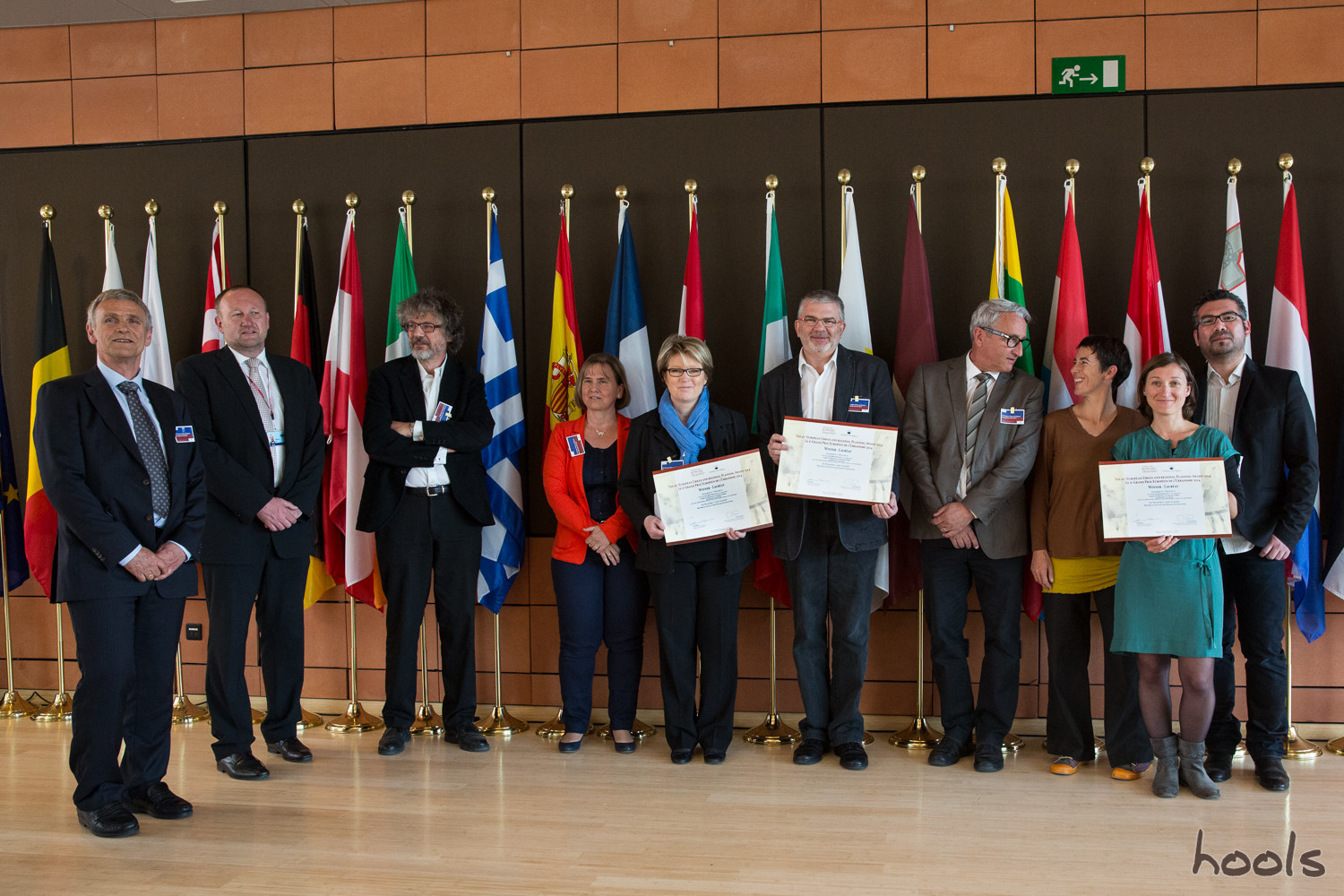
|
|
Norway: Fornebu – a green town built on outstanding national and international expertise
The Municipality of Bærum, Norway, represented by planners Pedro Ardila, Hans Kristian Lingsom and Comunity Director Arthur Wøhni
Jury citation:
Following the relocation of the Oslo international airport, it was decided to redevelop the old airport location, a large brown field site, into 6000 housing units including social and commercial infrastructure; 20 000 offices, and extensive recreational and wild life spaces.
The underlying philosophy is that the area should be a showcase for modern environmental thinking, emphasizing sustainability in terms of energy, environmental standards and adaptation to climate change. The visions and strategies are incorporated in the master plan, a statutory instrument, adopted by the Bærum Municipality in 1999. The entire development process is expected to be complete by 2025.
The jury was particularly impressed by the way in which a wide range of issues associated with energy supply and consumption; efforts to minimize carbon dioxide emissions, and measures for handling pollution and noise, are being implemented in parallel with a broadly based strategy for safeguarding and strengthening the biological diversity and landscape qualities of the area. The project demonstrates, in an exceptional manner, how long-term spatial planning can facilitate a holistic approach to harmonising a very complex range of environmental issues in a coordinated way to allow for a high intensity of land use for residential and commercial purposes.
The project emphasises the combination of renewable energy sources, such as heat from sea-water and solar energy; passive house standards; appropriate and sustainable building materials; energy efficient lighting; local recycling and handling of waste, and a strong emphasis on public transport. This will, in the opinion of the jury, contribute significantly to the development of a new community with low energy requirements and a light carbon footprint.
A wide range of national and international expertise has been involved in the project. The process has also required extensive participation by national and regional stakeholders as well as the local population. Overall, the jury felt that the project provides a very good example of complex stakeholder involvement and management and demonstrated the effective integration of spatial planning and renewable energy.
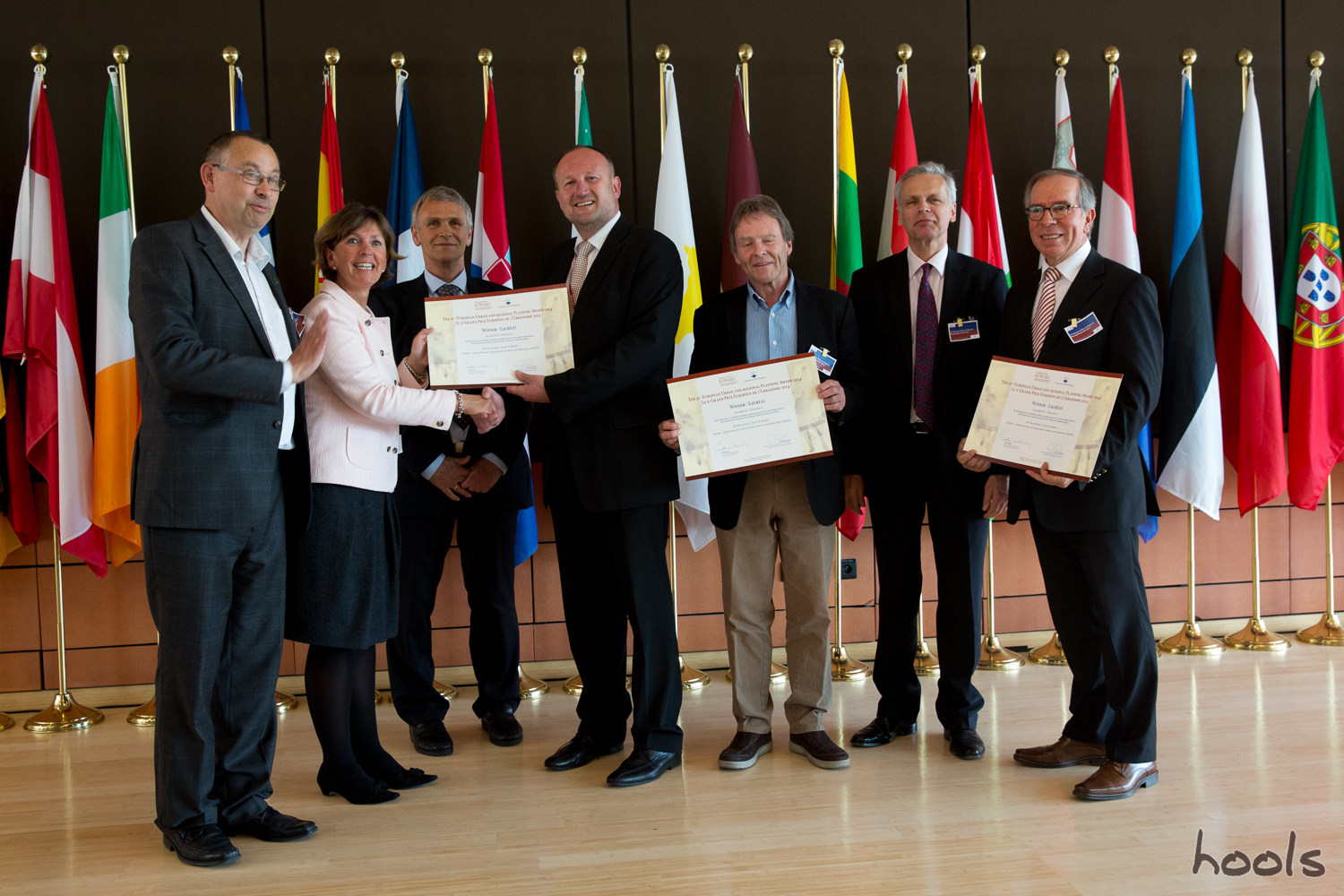
|
|
Belgium: Limburg Territorial Development Programme (T.OP Limburg)
Ruimte Vlaanderen, Spatial Development Department Flanders, represented by project manager Liesl Vanautgaerden, and the office Maat-ontwerpers responsible for the design research.
Jury citation:
The scheduled closure of Ford Genk - one of Limburg’s main economic engines - presents the region with a major societal challenge. The Government of Flanders is implementing a major investment programme aimed at strengthening existing economic activity, accelerating new initiatives and promoting innovative practices while the region is undergoing a radical spatial reorganization.
The Territorial Development Programme introduces a broad area-based regional programme with a strong focus on territorial cohesion for the entire region. The jury finds the strategic and planned approach to solving a wide range of social, economic and environmental issues through various action programmes, to be a particularly good example of planning for regeneration on a regional scale. The approach is innovative and its success depends on contributions from a comprehensive range of skills.
A central element in the programme is the RE-MINE ambition to create a new sustainable energy landscape in the mining areas. The jury was impressed by the way in which an experimental approach to the development and diversification of sustainable energy production and distribution has been adopted. At the same time, the old mining landscapes are gradually undergoing a greening process, converting them into parkland and national park thereby increasing the amenity of the area as well as improving sustainability.
The jury consider by the way in which a multitude of public agencies have managed to coordinate their activities with numerous private interests to be an outstanding example of planning and management in a very complex context of interacting interests. The programme also has a strong focus on civic engagement and participation.
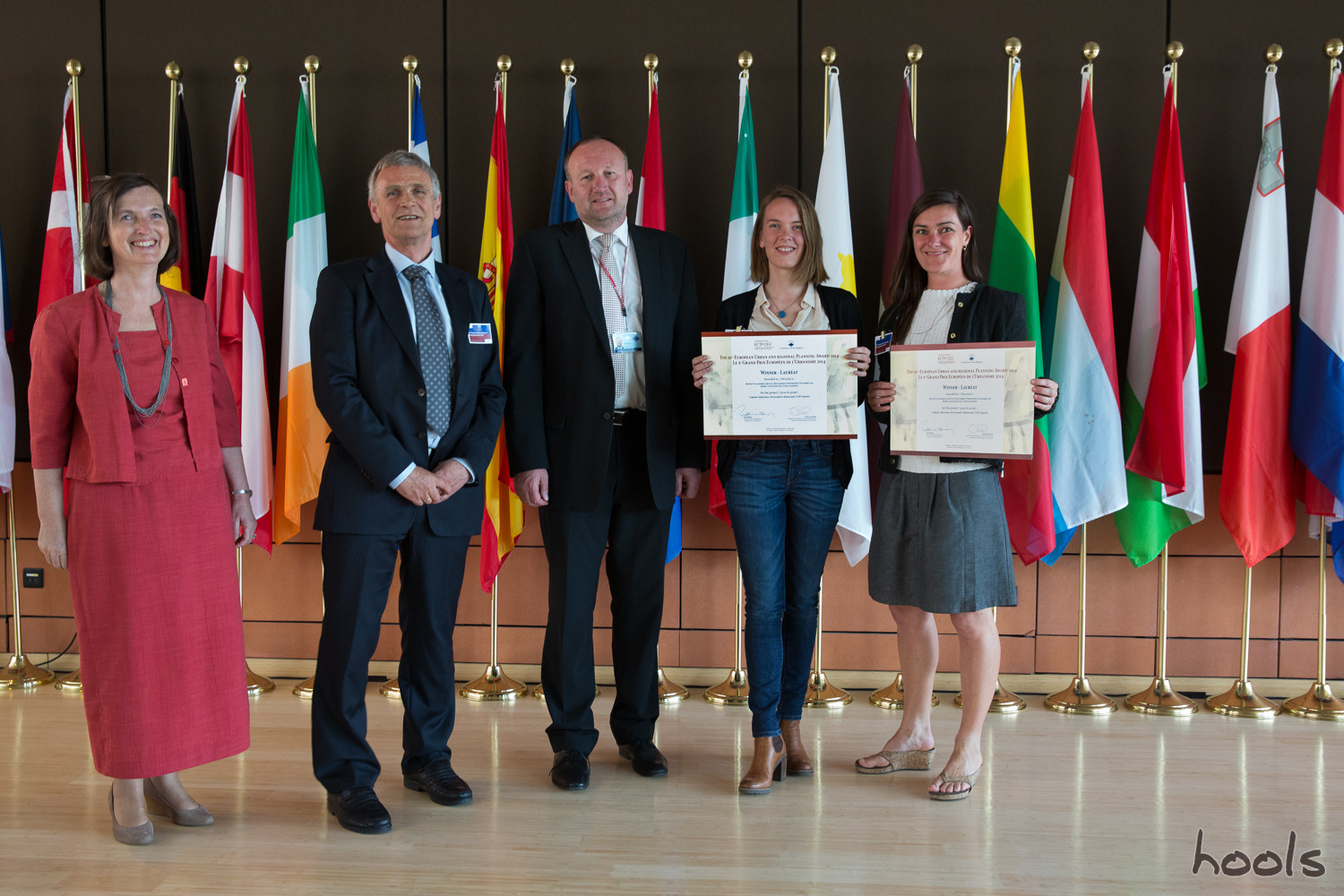
|
>>> See all photos <<<
|
The Jury:
• President of the jury: Petter Wiberg, Forum for Municipal Planning (FKP), Norway
• Vincent Berrutto, Executive Agency for Competitiveness and Innovation (EACI), Head of Unit Energy Efficiency
• Hella Dunger-Löper, Plenipotentiary of the Land of Berlin for Federal and European Affairs, Representative of the Committee of the Regions and the Commission for Territorial Cohesion Territorial Cohesion Policy, Germany
• Dominique Lancrenon, ECTP-CEU Secretary General, France
• Diane Smith, European and Corporate Affairs Manager, Town and Country Planning Association, SPECIAL
Project Manager, UK
• Alex House, Projects and Policy Officer and SPECIAL Project Coordinator, Town and Country Planning Association, UK
• Christine Schwaberger, Spatial Planner, Department for Spatial Planning Law, Provincial Government of Styria, SPECIAL project Partner, Austria
|
 |

All ENTRIES TO THE 2014 AWARDS
Former Editions:










